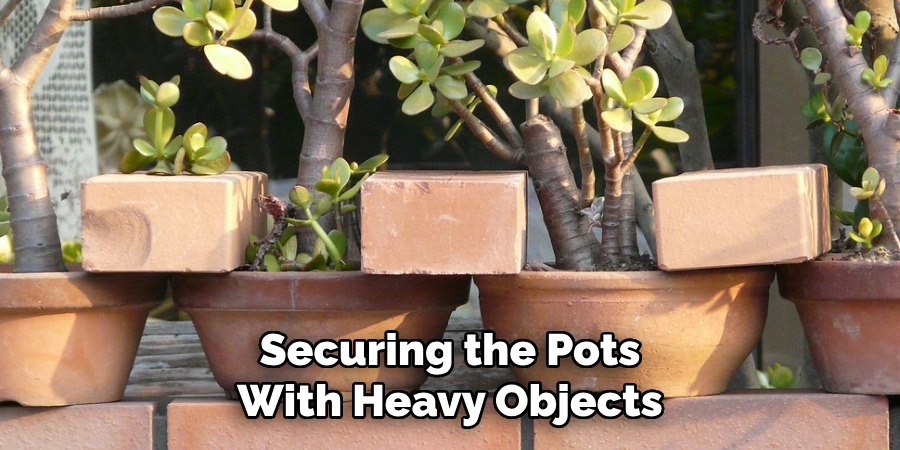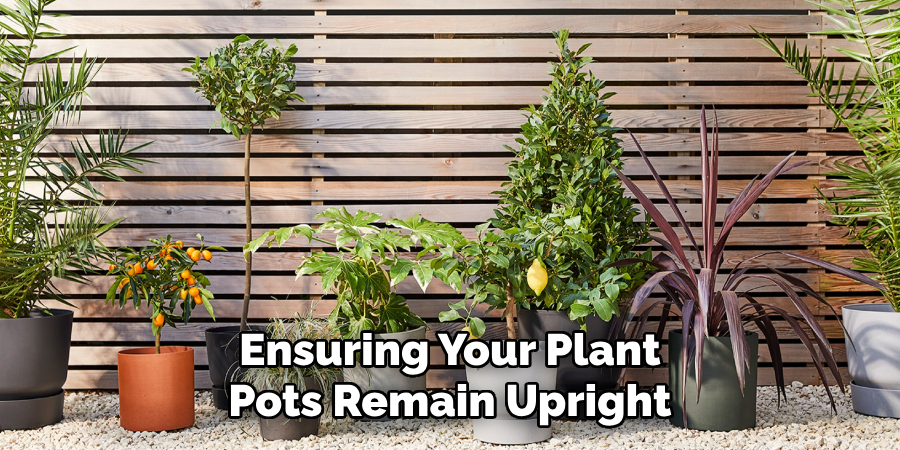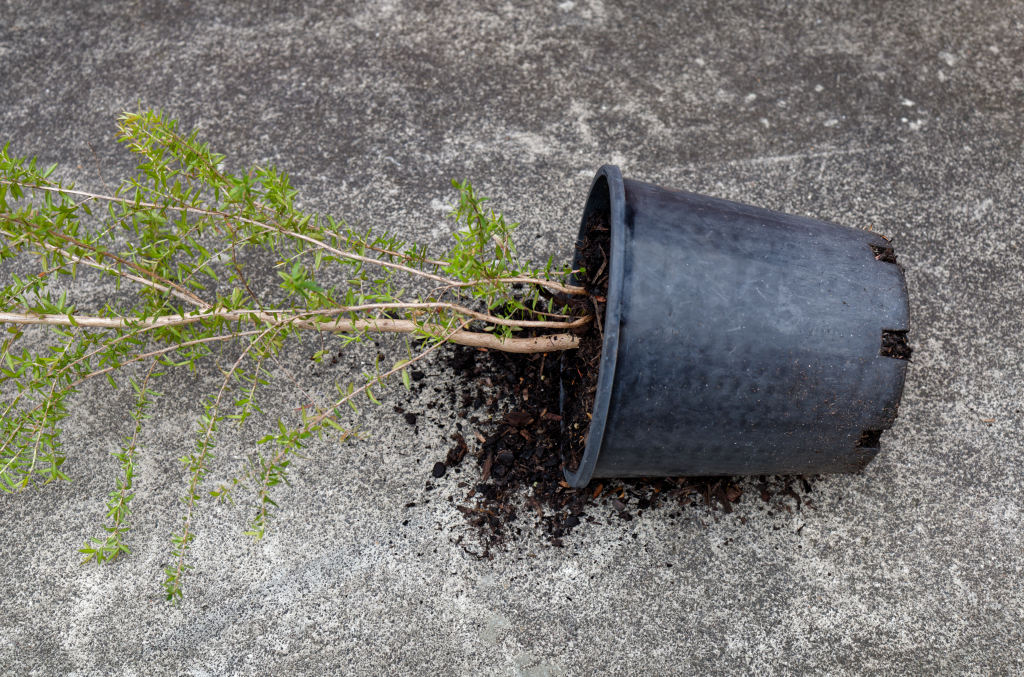To stop plant pots from falling over in wind, use heavyweight pots or add rocks or sand to the bottom for stability. When the wind blows, it can easily knock over lightweight pots, causing damage to plants and surrounding areas.
Ensuring the pots are properly anchored will prevent this issue and keep your plants safe and secure. By following these simple steps, you can enjoy your garden without worrying about pots toppling over in windy conditions.

Credit: pumpkinsandpetals.com
How to Stop Plant Pots Falling Over in Wind: Step by Step Guide
Understanding The Problem: Why Do Plant Pots Fall Over In The Wind?
Understanding why plant pots fall over in windy conditions is crucial in addressing the problem. Several factors contribute to this issue. The size and weight of the plant pots play a significant role. Lightweight pots are more likely to topple over when exposed to strong winds.
Poorly balanced pots, where the weight distribution is uneven, are also prone to falling. The height of the plant and the openness of the location can increase the wind’s impact on the pots. Additionally, the design and stability of the support structures, such as stands or hangers, can affect their resilience in windy weather.
Addressing these factors is essential to prevent plant pots from falling over, ensuring the safety and longevity of your plants.
Choosing The Right Size And Weight For Your Plant Pots
To ensure that your plant pots stay upright in windy conditions, it’s vital to choose the right size and weight. Selecting plant pots with the proper weight and size is crucial for their ability to withstand strong winds. When determining the appropriate weight and size, various factors should be considered.
These factors include the type of plant you intend to grow, the location of your garden, and the prevailing wind conditions in your area. Pots that are too lightweight can easily topple over, while pots that are too heavy may be difficult to move or cause damage to your plants’ roots.
By carefully evaluating these factors, you can find the perfect balance and ensure that your plant pots remain stable and secure, even during windy weather conditions.
Securing Plant Pots To Prevent Toppling In Windy Conditions
Plant pots falling over in windy conditions can be prevented by using sturdy materials that resist toppling. Additionally, anchoring techniques can secure plant pots in windy areas. By choosing plant pots made from strong and durable materials such as concrete or heavy clay, you can ensure they stay upright.
Using heavier pots or adding weights to the bottom can also provide stability. Furthermore, securing pots to fixed structures, such as fences or walls, can prevent them from being easily knocked over by wind gusts. Alternatively, using stakes or supports can help anchor the pots to the ground and provide extra stability.
Taking these measures will help you maintain the beauty of your plants and prevent any damage caused by falling pots.
Further Enhancements For Additional Stability
To prevent plant pots from falling over in windy conditions, there are a few additional enhancements you can make for extra stability. One effective method is to add drainage holes to the bottom of the pot, reducing the chance of tipping over.
Another option is to utilize decorative rocks or gravel to weigh down the pots and provide added support. These rocks or gravel can be placed on top of the soil or even layered at the bottom of the pot before adding the plant.
By incorporating these simple techniques, you can ensure that your plant pots remain upright and secure even during strong winds, safeguarding your plants and preserving their aesthetic appeal.
Protective Measures For Vulnerable Plant Pots
When it comes to protecting plant pots from wind, there are various strategies that can be implemented. One effective approach is to create windbreaks or barriers around the pots, shielding them from strong gusts. These barriers can be constructed using materials such as wooden stakes or mesh fencing.
Another method is to place the vulnerable pots in a sheltered area, away from direct exposure to the wind. This could involve moving them closer to a wall or under the cover of a roof. Additionally, securing the pots with heavy objects, such as bricks or rocks, can provide extra stability.

It’s important to regularly inspect the pots and make any necessary adjustments to ensure they remain stable. By taking these protective measures, tall or top-heavy plant pots can be safeguarded against wind damage.
Overcoming Common Obstacles In Windy Environments
Overcoming common obstacles in windy environments can be a challenging task. Dealing with limited space can make it difficult to secure plant pots and prevent them from falling over in strong winds. Additionally, exposure to strong winds can increase the risk of plants toppling over.
This is particularly true for balcony or rooftop gardens, which are more vulnerable to wind gusts. To address these challenges, consider using heavy-weight plant pots or anchoring them with stakes to provide stability. Opt for shorter plants or dwarf varieties that are more resistant to wind damage.
Creating windbreaks such as trellises or installing windproof barriers can also help protect your plants. Regularly inspecting the pots and plant supports for any signs of weakness or damage is crucial to prevent accidents. By taking these special considerations into account, you can effectively prevent plant pots from falling over in wind-prone areas.
Maintenance And Regular Inspections
Regularly inspect your plant pots for any signs of instability or damage. This is crucial for maintaining their stability in windy conditions. Carefully examine the pots for cracks, wobbling, or loose soil. Ensure that they are placed on a stable surface and that their weight is evenly distributed.
Consider using heavier pots or adding weights, such as stones or sandbags, to provide extra stability. Additionally, choose pots with a wider base or those made from heavier materials like ceramic or concrete. If possible, move your pots to a sheltered area to protect them from strong winds.
By following these maintenance and inspection practices, you can enjoy long-lasting stability for your plant pots, preventing them from falling over in windy weather.
Enjoying Wind-Resistant Plant Pots
Plant pots falling over in the wind can be a frustrating problem for garden enthusiasts. To prevent this, there are several benefits worth considering. By ensuring your plant pots remain upright, you can enjoy a well-maintained garden that looks appealing and organized.

In addition, wind-resistant plant pots offer stability and protection to your plants, preventing them from getting damaged. Enhancing the aesthetic appeal of your plant pots can also add to the overall ambiance of your outdoor space. Whether you choose decorative holders, sturdy bases, or use anchoring systems, the result will be a visually pleasing garden that can withstand windy conditions.
So don’t let the wind disrupt your gardening efforts, follow these tips to keep your plant pots secure and enjoy a beautiful and resilient outdoor space.
Frequently Asked Questions On How To Stop Plant Pots Falling Over In Wind
How Can I Prevent Plant Pots From Falling Over In Windy Weather?
To prevent plant pots from falling over in windy weather, you can use heavier pots or weighted bases to provide stability. Additionally, placing the pots in a sheltered area or securing them with stakes can help prevent them from toppling over.
Conclusion
Keeping your plant pots from toppling over in windy conditions is essential for maintaining a healthy and thriving garden. By following the tips and techniques discussed in this blog post, you can ensure that your plants remain secure and upright, even during strong gusts of wind.
First, choose the right size and weight of plant pots to provide stability. Second, anchor your pots using methods such as heavy rocks or stakes. Third, group pots together to create a stronger support system. Fourth, consider using self-watering pots to add weight to the base.
Fifth, position your plant pots strategically to minimize wind exposure. By implementing these strategies, you can enjoy the beauty and benefits of your garden without worrying about your plant pots falling over. Remember, a little extra effort and consideration can go a long way in achieving a stable and well-protected garden.

